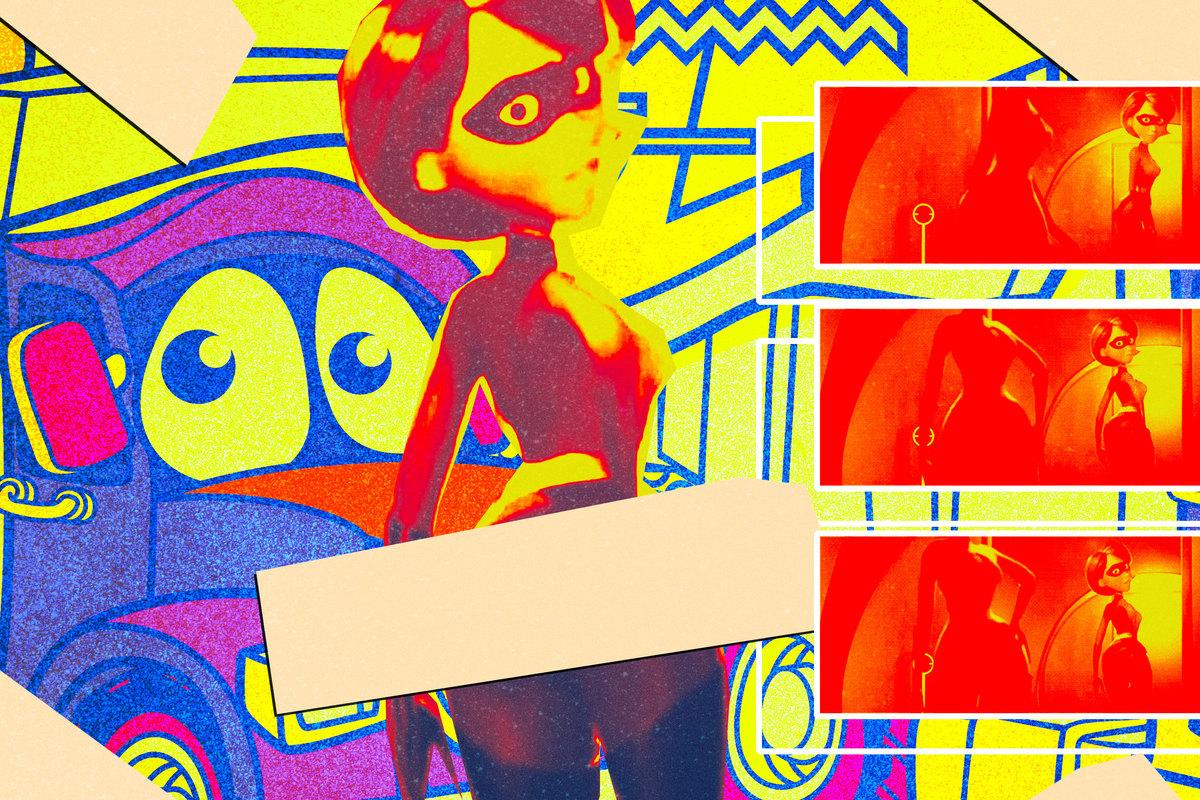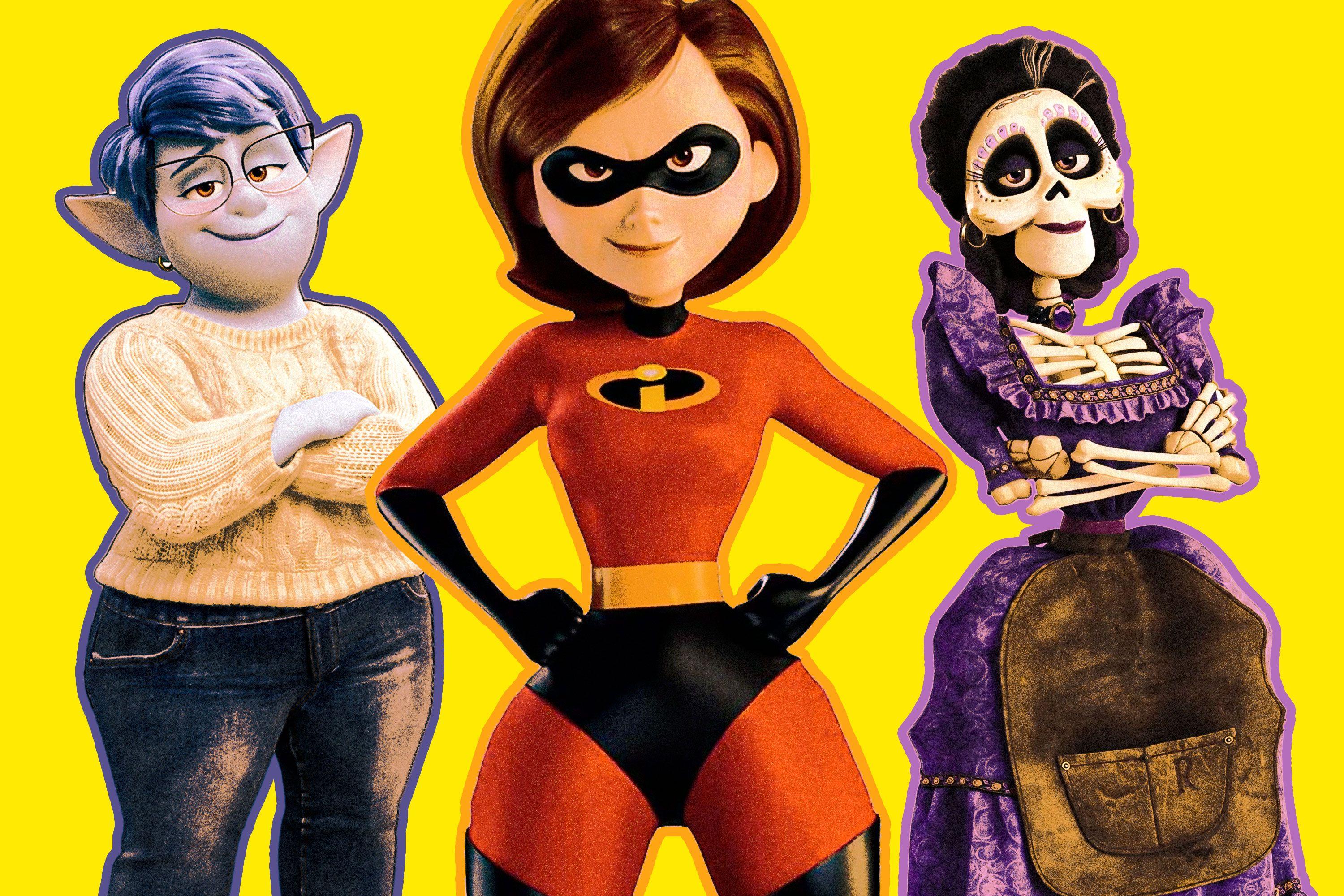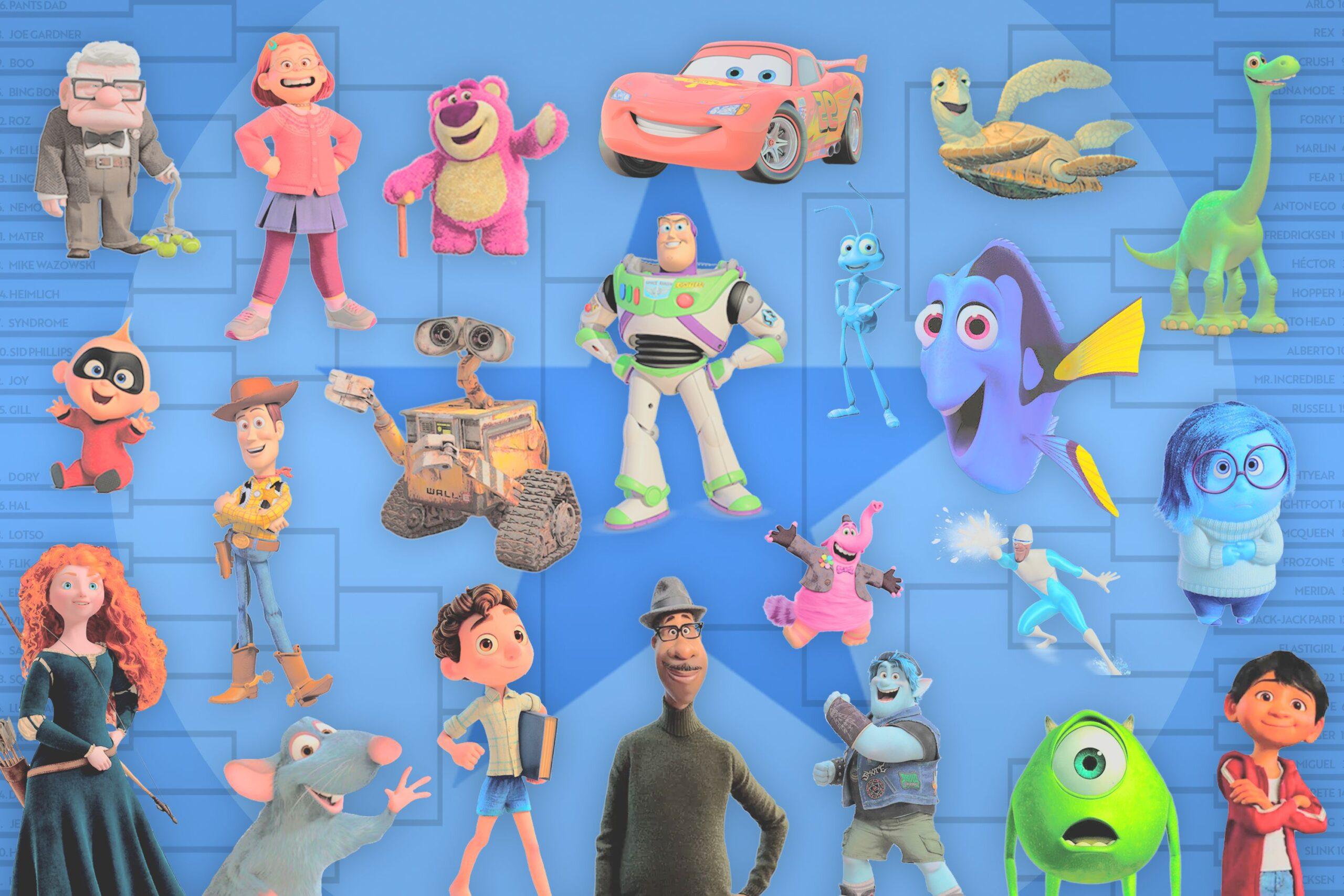
Ahead of the release of Lightyear, The Ringer is hosting Pixar Week—a celebration of the toys, rats, clown fish, and more that helped define one of the greatest studios of the 21st century. At the heart of the occasion is the Best Pixar Character Bracket, a cutthroat tournament to determine the most iconic figure of them all. Check back throughout the week to vote for your favorite characters and read a selection of stories that spotlight some of Pixar’s finest moments. To infinity … and beyond!
Like Girl Scout Cookies, a horse race that people actually watch, the release of mini Cadbury eggs, or enjoying an extra hour of daylight because some dusty old wartime practice said we could, there are certain ideas—certain spiritual concepts—that reoccur just enough to thrill and delight every time. One such idea reveals itself not on our clocks or on grocery store shelves, but on the internet, each time a new version of an already perfect meme rises to the surface. A few times each year, we’re reminded that the computer animation studio known as Pixar has decided to endow its maternal characters with absolute dump-truck asses.
The Pixar moms in question are, for lack of a more perfectly accurate sentiment, thicker than a bowl of oatmeal. They are stacked with decks so mighty that their truest capabilities could only be known to David Blaine. Most recently, Pixar hitched a wagon to the mom from Onward substantial enough to accommodate an entire family of five along the Oregon Trail; Mamá Imelda from Coco is proof that, if hips do not and cannot lie, then you most certainly are going to get your feelings hurt from beyond the grave. And when watching Elastigirl don her super suit in The Incredibles franchise, I have to assume that even Marie Antoinette would be like: OK, Pixar, I think that’s probably enough cake.

The memes about Pixar moms are typically simple in construct, but they evoke more complex questions that may have come to mind the first time viewers laid eyes on a cartoon apple bottom, whether it was Helen Parr, Princess Jasmine, or the mom from Dexter’s Laboratory. These questions include: But where are her organs? Can the lungs go in the butt? Mommy? Mommy??? The defining Pixar tweet of record first appeared in April 2020, when Philip Matarese (cocreator of the animated HBO series Animals.) posed a simple question from the point of view of a Pixar executives meeting: “What if we gave every mom an absolute dumptruck ass.”
It’s the kind of singular observation and construction that only gets funnier each time it takes a new shape, such as Don Draper retroactively pitching motherly dump trucks while embodying the spirit of (drunk) Pixar, or writer Ben Rosen joking about about Mrs. Incredible’s “big honkin Christmas ham.” Once Matarese drew our eyes toward the proliferation of Helen Parr’s bodacious backside, there was no unseeing it. But the questions remain: What is Pixar up to with these dump trucks? Why does this studio think it needs to be able to bounce a silver dollar off the backside of all its maternal figures’ buns?
I intend to figure it out. And it’s an investigation that must, unfortunately, begin at the end of a perfect meme. Because while Pixar giving every one of its moms an absolute dump truck of an ass is a hilarious concept, it’s also not entirely accurate.
As the dump-truck meme has blossomed across social media platforms, most roundups of particularly bodacious Pixar moms start with Elastigirl … and tend to grow conceptually shakier from there.
There’s the aforementioned mom from Onward, Laurel Lightfoot, who obviously has an impressive caboose. Debuting 16 years after The Incredibles, though, her character also has a more realistic (and elven) body type to accompany her derriere. The same goes for Riley’s mom in Inside Out, who is absolutely slicing off a little cake for us—but shall we call it a dump truck? In good conscience, we shall not, especially with Riley’s dad’s mustache sucking every bit of air out of the room. The animated mom who really gets the meme-dwellers going is Kate from Inner Workings, who is in possession of a dump truck so outrageous, and a waist so diabolically tiny, that it practically exists in a different universe. And yet Kate is not a Pixar mom at all. Her character does not have kids, and Inner Workings is not a Pixar short; it was produced by Walt Disney Animation Studios.
Likewise, Aunt Fanny from Robots is not a Pixar be-dump-trucked mom, as much as she is an aunt, robot, and Blue Sky Studio character. Oft-cited Class-D-licensed dump-truck-havers like Chel from The Road to El Dorado, Princess Kida from Atlantis: The Lost Empire, and Meg from Hercules are all non-moms from non-Pixar studios. There is Queen from A Bug’s Life, an actual mom from an actual Pixar movie; given that she’s also an actual ant, however, Queen isn’t so much serving sovereign cheeks as she is a royally bountiful thorax. Remaining Pixar moms such as Queen Elinor from Brave, Andy’s mom from Toy Story, and Ming Lee from Turning Red are all in possession of great, wonderful tuchuses to be sure—but there’s simply not a dump truck in sight. So that just leaves us with Mamá Imelda from Coco, whose waist-to-hip ratio would surely only be achievable on the BBL table … except for the fact that Mamá Imelda is a stone-cold skeleton, which explains her spine-sized waist (and that square thing in your face).
And unfortunately, a dump-truck meme cannot live on undead bones alone. But debunking the myth that all Pixar moms have dump-truck asses when it’s really only two or three still doesn’t explain the one dump-truck ass to meme them all. Why was Elastigirl designed to look like that? And why is the internet so obsessed with her?
When her animation students at Kansas City Art Institute kept asking why the moms in Pixar have dump-truck asses, Bona Bones—a stop-motion animation director, educator, and animator on Robot Chicken—knew she had to share the answer beyond just the classroom. That’s how she found herself making a TikTok to directly answer the question: “Why do all Pixar moms have such huge dumpies?” In the TikTok, which has been viewed more than 1.3 million times, Bones explains that “Pixar’s fascination with the massive dump-truck butt” can be accredited to a design trope known as “Hartman hips.”
Butch Hartman is an American animator best known for creating series like The Fairly OddParents and Danny Phantom, both of which premiered shortly before The Incredibles, and both of which feature mothers in possession of dump trucks that could most certainly be thrown around in supernatural circles alongside Elastigirl’s. But just because Hartman’s name lends itself well to alliteration doesn’t mean he solely invented the trope that bears his moniker. Bones says that the more stylized caricature of moms with tiny waists and wide hips was popularized on television even earlier by Genndy Tartakovsky, the animator responsible for Bones’s own personal favorite dump truck: Dexter’s mom from Dexter’s Laboratory, on whose shelf-of-a-donk Dexter once sat atop in lieu of an bicycle seat.
However, the function of Hartman hips in animation is not typically transportation-motivated, as Bones teaches in the gender dimorphism lecture she offers her students each semester: a biology-meets-animation lesson on “how we differentiate male and female bodies, and how we differentiate different ages in male and female bodies.” Basically, Bones says that characters like Elastigirl are cheeked up because of science—specifically, because of shape psychology.
In animation, observing how humans denote meaning from shapes is central to telling a nuanced story, which Pixar has angled to do since its inception. “What does a more angular character say, versus what does a more round character say?” Bones says she asks her students as they begin to learn not just how to design characters, but why animators design characters the way they do.
Given that Pixar often tells stories about protagonists in the contexts of their families and the roles that they occupy within them, the studio was presented a unique challenge—one that was far less common in the mostly motherless (non-evil variety, at least) early Disney movies, as Bones points out in her TikTok. Pixar had to be able to visually differentiate between younger, adolescent girls, and older, more maternal female figures, and Bones says Hartman hips function as a “quick, easy, and effective way to denote a more mature woman.” For a bounty of reasons drifting around the psychological and biological labyrinth of our brains, Bones says, humans tend to associate “soft, rounded hips” with the “safety, closeness, and trustworthiness” of maternal figures.
Why, then, is everyone so simultaneously comforted by and horny for their safe, trustworthy, softly-rounded Pixar mom, Helen Parr?
Well, it’s a combination of animation choices and changing times. Similar to the frequently deployed trick to give cartoon characters four fingers instead of five to increase production speed in animation, Bones says that giving maternal characters large hips is a “short cut” of the storytelling variety. It’s supposed to inherently signal motherly existence. In Tartakovsky’s and Hartman’s heyday, “it was like the lesser of two evils when studios didn’t want huge boobs on screens for kids’ cartoons.”
“But now,” Bones says of the Hartman hip, “it’s just as sexual as breasts.”
As the cultural standards for what kind of female body parts are overtly sexualized have shifted, Hartman hips are no longer the quick and efficient shape-psychology animation decision they once were. “We don’t see the same kind of sexualized body parts on male characters that we do on female characters,” Bones says, which is why animators can cartoonishly broaden Mr. Incredible’s shoulders to denote a more mature masculinity without necessarily connoting anything sexual. It’s also why animators could broaden Elastigirl’s hips in 2004 without much fanfare … but 14 years later, when Incredibles 2 premiered, that same shape suddenly embodied a different, much more memeable story: Elastigirl was now in possession of the most desirable feature in attractiveness standards for women. Cue 2022, when the Twitter streets demand that Parr be recognized for how “dummy thicccccc” she is, in the words of one voter in The Ringer’s Pixar character bracket.
The goal of Elastigirl’s physique was never predominantly to get you going like a turbo ’Vette, but rather to convey to viewers that she’s a maternal figure via the deployment of a frequently used trope. But just because there is historical, psychological precedent for a dummy thicc hip-to-waist ratio on female cartoon characters doesn’t mean the trope is protected in perpetuity from the ways in which society objectifies women. If animation can call upon psychological shortcuts to enhance its storytelling with old standby methods like Hartman hips, then surely it can use storytelling to subvert our psychological shortcuts with more progressive techniques as well.
Still, Bones believes that Hartman hips are so ingrained in our shape psychology and aesthetic design practices that they’re unlikely to ever fully phase out of animation. But she also notes there are “a jillion other ways [to denote age],” pointing to Mexican animator Jorge R. Gutiérrez’s work (The Book of Life, Maya and the Three) as an excellent example of “broadening the spectrum on what female body types look like” beyond the exaggerated hourglass figure. Gutiérrez works closely with his wife and fellow animator Sandra Equihua to design female characters “because the way that women view other women is often more diverse.”
The tendency to draw hard lines between what we do and do not glorify on women’s bodies is a tradition far older than hitching a two-seater wagon to a cartoon mom, or making a joke about that wagon on the internet. But that doesn’t mean that traditions can’t change or diversify with time. While memes aren’t generally the place for nuance and growth, animation certainly can be.


